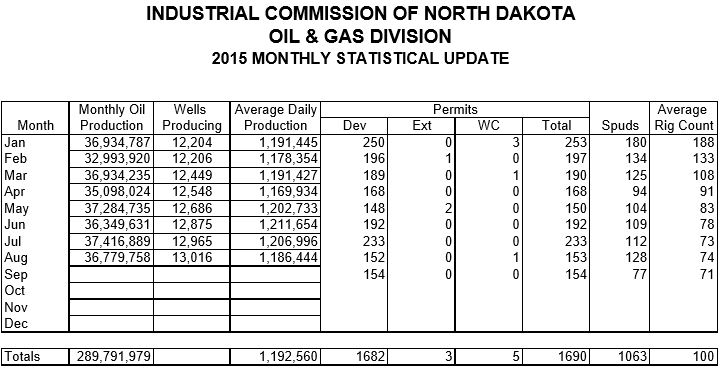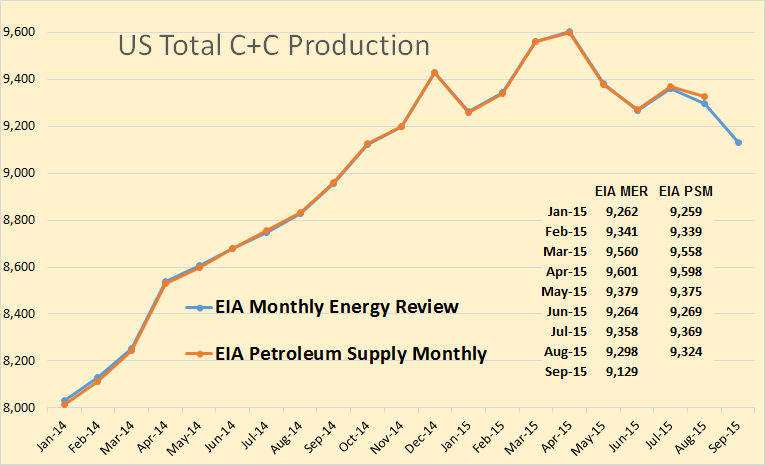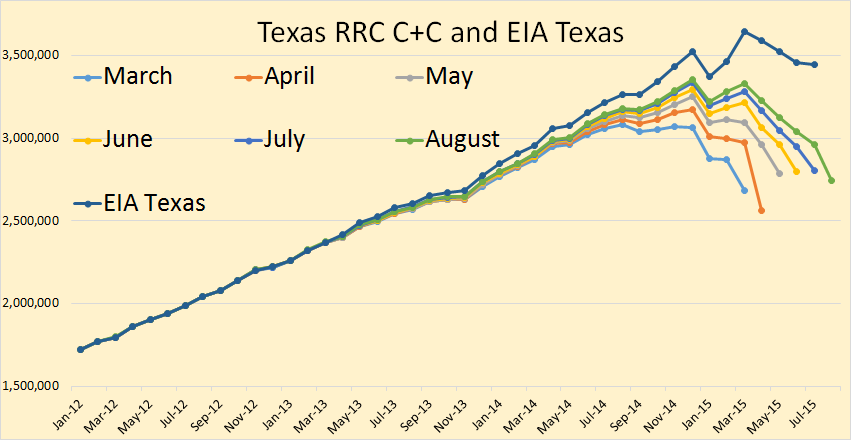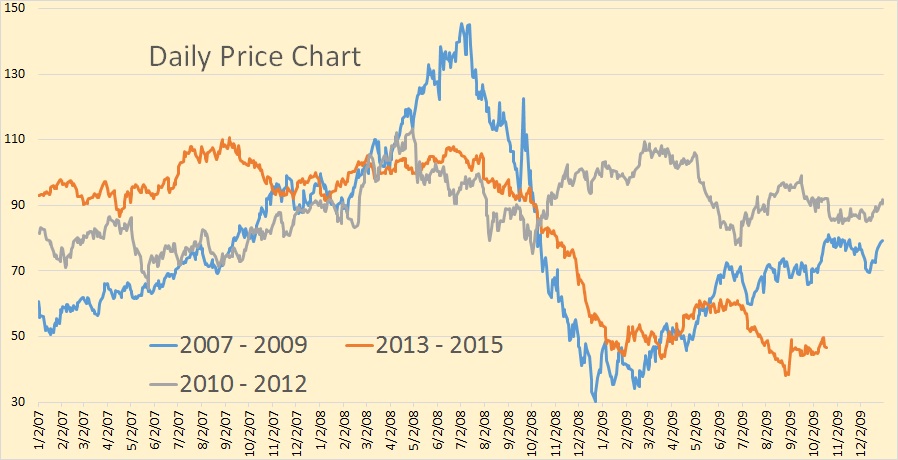North Dakota Spuds hit 5 year low. Not since January of 2010 have spuds been below 77, the point they hit in September.
Category: Uncategorized
US Oil Production by State
The EIA’s Petroleum Supply Monthly is just out with production numbers, through August, for each state and offshore territories. The EIA’s Monthly Energy Review is also out. This publication has US production data through September but not for individual states.
The Petroleum Supply Monthly June 15 production numbers were revised down considerably this month. And you can see they had a drop of 169,000 bpd in September. I think there will likely be an even larger drop in October. At any rate US production is finally starting to drop significantly.
Looking Back 10 Years After Peak Oil
This is a guest post by Verwimp Bruno.
All views expressed here are those of Verwimp Bruno and do not necessarily represent those of Ron Patterson.
1. INTRODUCTION
Peak Oil is the moment in time when, on a global scale, the maximum rate of oil production is reached. The moment after which oil production, by nature, must decline forever. Since Earth is a closed system, next to this production (supply) event, there must be an equal demand event: Peak Oil Consumption. Since there are no substantial above ground deposits, Peak Oil Production and Peak Oil Consumption must coincide. The world consists of a lot of different countries, some of which are already far beyond peak oil production That leads to the assumption the world as a whole reaches peak oil production. On the demand side, it is worth looking, because different countries have different economies, different degrees of development, and so on, if, while some countries still experience significant growth in oil consumption, some countries are already well beyond Peak Oil Consumption by now. Read More
Texas Oil and Gas Decline in August
The Texas RRC Oil and Gas Production Data with production data for August is out.
The RRC data is always incomplete but if this month’s incomplete data is less than last month’s incomplete data then that’s a pretty good indicator that production this month is down.
The EIA data here is only through July. They have Texas production peaking in March at 3,644,000 barrels per day and declining by 197,000 bpd to 3,447,000 bpd in July.
Open Thread, Any Energy Related Subject
Data for the below chart is from the Weekly Petroleum Status Report.
Here we have a three year WTI price comparison chart. You can see that the 2014 price collapse began at almost the exact same time of the year as the 2008 price collapse. The 2008 collapse was a lot more dramatic and fell faster and slightly lower than the 2014 collapse. The 2008 collapse bottomed out around Christmas of that year and the 2014 did not pause until late January 2015. However by late October 2009 the WTI price was already in the $80 range. This time however we are still stuck below $50.




